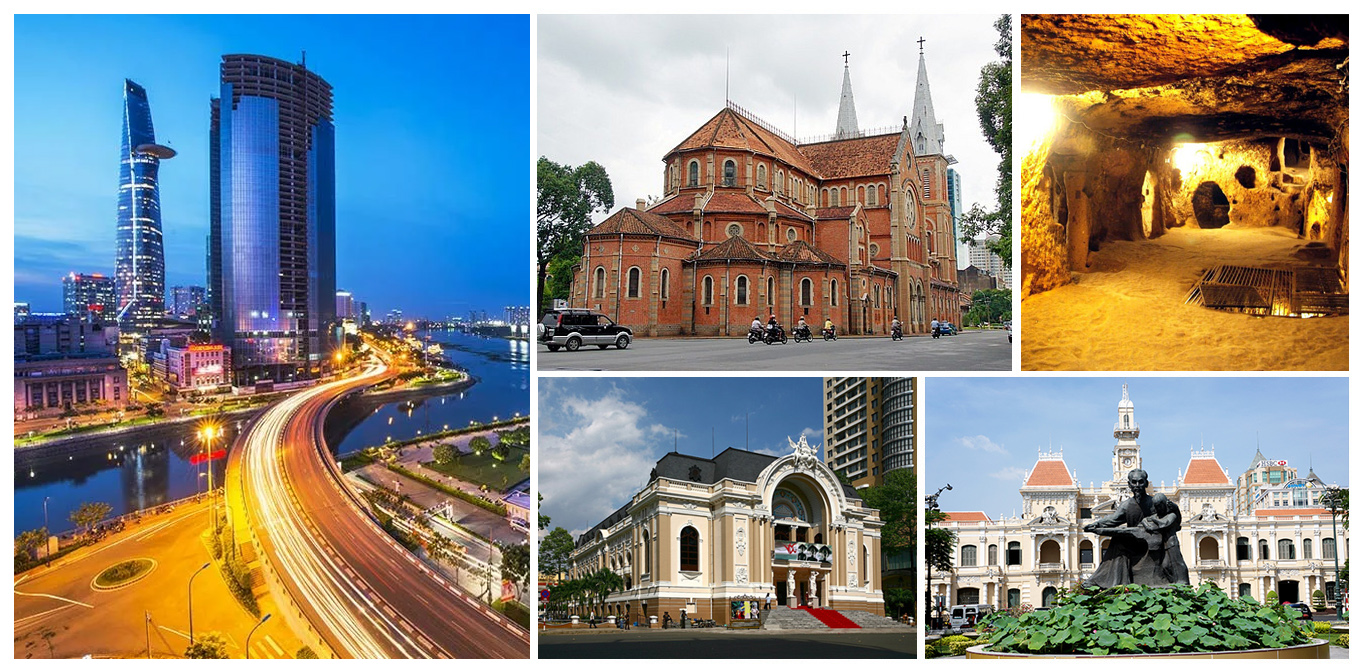2 Day Saigon Tour (Sightseeing Tour + Cu Chi Tunnels)
A two-day tour of Saigon (Ho Chi Minh City) from Nha Trang - the largest city in Vietnam, as well as the famous guerrilla tunnels of the Vietnam War.

You can't say you've been to Vietnam unless you've visited the city of Ho Chi Minh, also known as Saigon since the days of the French colonists and then renamed Ho Chi Minh after the leader of the Vietnamese communist movement - the first president of a unified independent Vietnam.
During the tour we will see:
- The famous guerrilla tunnels of Cu Chi
- Ben Thanh market in Saigon
- Reunification Palace
- War Crimes Museum
- Main post office
Organized by:
|
|
|
"It is my pleasure to help people around the world to get better understanding about Sri-Lanka and Vietnam" |
Ho Chi Minh is the largest city in Vietnam, where traditional and modern influences and many cultures are intertwined: the smell of incense, next to ancient pagodas, elegant shopping malls, skyscrapers, the best hotels and the cheapest guesthouses, some of the best restaurants in the world and the color of street eateries, the most glamorous boutiques and Asian markets, French colonial villas, karaoke bars and a variety of shops.
The city itself was home to refugees fleeing war in the north as early as the early 17th century. In the middle of the 19th century it was the capital of French Indochina, and then the independent Republic of South Vietnam 1955-1975.
Ho Chi Minh City, which is considered a melting pot in which all the cultures and nationalities of Vietnam are mixed, consists of 24 districts (2013). Each district has its own history and specialization.
Detailed tour program:
Cu Chi Tunnels
The legendary tunnels of the Vietnamese guerrillas, preserved from the Vietnam War with the United States
South Vietnam (in particular, the Cu Chi region) was a hotbed of underground resistance during the American expansion. Now this suburban area is called the underground village: its labyrinths stretch underground for 187 km - from Saigon to the very Cambodian border. The tunnels were dug for 15 years with improvised means right under the noses of unsuspecting American infantry.

The small village of Cu Chi, which took its name from rubber, would have remained one of the countless inconspicuous villages in which American troops carried out their "actions to clean up the area", if not for the amazing perseverance and hard work of the locals. The tunnel system they created, some of which even have multiple "floors", includes countless entrances, living quarters, warehouses, weapons workshops, field hospitals, command centers and kitchens. Above the main tunnel, which is 70 cm wide and 90 cm high, there is a 3-4 meter brickwork. The tunnel can withstand heavy artillery fire and a 100-kilogram bomb.

Tall American soldiers could not penetrate the labyrinths, and those who did manage to do so were met by numerous traps - so only a few returned from there. Today, the Cu Chi Tunnels have become a major tourist attraction, providing a unique insight into the underground life of the Vietnamese guerrillas.
Currently, a tourist attraction has been organized on the basis of two elements of the complex.
Return to Saigon

Dinner and overnight in Saigon
Day 2
Ben Tanh Market

Ben Thanh Market is one of Saigon's iconic attractions and is the heart of the city's central district, the Reunification Palace, the former presidential palace, the War Crimes Museum, the Opera House, the General Post Office, Notre Dame Cathedral, City Hall, and much more.
Reunification Palace

The Reunification Palace (also known as the Independence Palace) is the former presidential palace of South Vietnam, whose architecture is a mixture of traditional and modern architecture typical of the 60s of the 20th century. Designed by architect Ngo Viet, this building is one of the city's stunning landmarks and a historical witness to two bitter wars with the French and the Americans.
War Crimes Museum

The War Crimes Museum, which tells the most horrific facts about the war, contains shocking photographs, models of "tiger cages" used to contain Vietnamese communists, photographs of sick children affected by American bombings. You will also have the rare opportunity to see some of the experimental weapons used in the war that were once classified.
Main post office

In the very center of the bustling Vietnamese city of Ho Chi Minh City, next to the Notre Dame Catholic Cathedral, the building of the city's Main Post Office is located. It is curious that the building was designed by the famous Gustave Eiffel, the same one who designed the Eiffel Tower in Paris and New York's Statue of Liberty. A huge building in Ho Chi Minh City appeared in 1891.
Notre Dame de Saigon

Notre-Dame Cathedral Saigon in Ho Chi Minh City is a functioning 19th-century Catholic church (completed in 1880). Today it is the main center of the Christian religion in the city and a popular tourist destination. During the construction of the cathedral, the project of the architect Jules Bourard in the Neo-Romanesque style with Gothic elements was taken as a basis.
End of the tour
Private tour Can start any day Variable program Possible with children Start from anywhere Comfortable car
Excursion features
![]()
For ready-made groups of 1-8 people
![]()
This tour is not tied to specific dates, you can start on any convenient day
![]()
The program can be changed and customized for you
![]()
The tour is recommended for travelers with children
![]()
We pick up from any hotel
![]()
Transport: air-conditioned car or minivan
Tour price: $300 per person (minimum 2)
What's included:
Private transfer throughout the route
Overnight at 3* hotel
English speaking guide
Not included:
Lunches and dinners
Personal expenses

